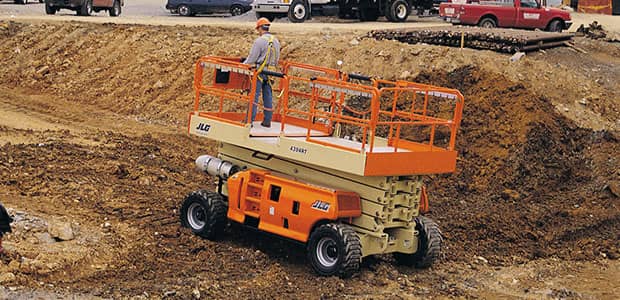Need More Information About Our Boom Lift Services?
Reach out to our team of experts today!
Scissor lifts are unique for jobs where workers need to move vertically to reach elevated spaces. Contractors working in places with higher ceilings such as malls, hospitals and warehouses need scissor lifts for tasks such as maintenance, electrical work, or painting. Like every other piece of equipment, scissor lifts need service and maintenance for enhanced safety and performance. Performing daily inspections and regular maintenance ensures the safety and reliability of the equipment.
Contact us today to learn more about our scissor lift service options!

Reach out to our team of experts today!
Scissor lifts require regular and scheduled maintenance for optimal performance and the safety of workers at heights. Structural stability is critical for safety when working on an extended scissor lift platform. A proper maintenance schedule based on the operator's manual can help ensure that all aspects of worker safety are considered.
A qualified person should be appointed as the safety expert at the job site to develop a properly laid-out scissor lift maintenance plan for all workers to follow. This maintenance plan should include all the important information about the specifications, maintenance schedule and requirements of the machine. As per OSHA and ANSI guidelines, proper checklists for maintenance and daily inspections must be included in the maintenance plan. All records of maintenance and inspections must be properly documented and reviewed in case of equipment breakdown, safety incident or an accident.
In a scheduled maintenance service, you can expect scissor lifts to undergo a list of safety checks during a thorough examination. This helps to identify any possible malfunctions, missing or loose components that could cause problems with operation. Service technicians performing maintenance must refer to the original operator’s manual to ensure proper service. Following a complete maintenance checklist for scissor lifts is important to ensure every element gets inspected appropriately.
While preventative maintenance is important in finding operational hazards, a proactive approach to daily maintenance helps reduce premature failure of the equipment. Walkaround inspections conducted by operators before using the scissor lift for any signs of malfunctions can be a contributing factor to proactive maintenance. Inspections should be more frequent if more than one operator is using the machine. The frequency of inspections can also be increased if the machine is being used in tough environmental conditions. Maintaining a daily inspection checklist at the job site is necessary to comply with regulations. However, it may vary depending on the local regulations.
A walkaround inspection of the equipment is all about visual checks to make sure that:
Operators should be using a daily inspection sheet that outlines all the items that need to be checked during the inspection. These logs need to be kept on file for reference in the event of an accident.
A down or defective scissor lift can impact project deadlines causing expensive delays to the business. Our service team is quick to offer repair and maintenance service at your job site. All you need to do is give us a call and we will schedule a technical team to tend to your equipment at the job site. Our state-of-the-art technology aids our technicians in making a quick and accurate diagnosis. With one of the largest rental fleets of scissor lifts, our technicians have unmatched knowledge when it comes to diagnosing and repairing scissor lifts. Additional support from our parts team makes getting replacement parts as seamless as possible.
Have a piece of equipment down in the middle of a project? Give us a call and we can get your machine up and running in no time.
Contact our service department for more details on scissor lift maintenance programs and repair services.